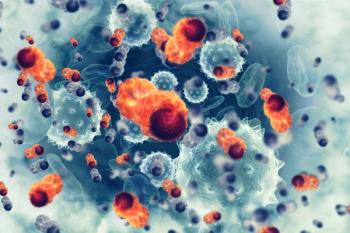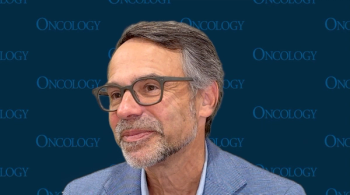
Oncology NEWS International
- Oncology NEWS International Vol 8 No 8
- Volume 8
- Issue 8
NSAIDs May Protect Against Common GI Cancers
ORLANDO-“Nonsteroidal anti-inflammatory drugs (NSAIDs) confer protection against the common GI cancers, not only against colon and rectal cancer, which we’ve known about, but also in the esophagus and stomach, where the protection was at least as strong,” Michael Langman, MD, said at the Digestive Disease Week meeting.
ORLANDONonsteroidal anti-inflammatory drugs (NSAIDs) confer protection against the common GI cancers, not only against colon and rectal cancer, which weve known about, but also in the esophagus and stomach, where the protection was at least as strong, Michael Langman, MD, said at the Digestive Disease Week meeting.
Dr. Langman led a research team at the University of Birmingham in England in a large Medical Research Council case-control study based on the Birmingham groups General Practitioner Research Database (GPRD). This vast resource contains data on all prescriptions written by general practitioners for 3.6 million people in the United Kingdom. It also contains information on diagnostic outcomes, and it extends back 36 months.
Our hypothesis was that if NSAIDs protect against cancer, we would see less of the disease in people who had many prescriptions for NSAIDs, Dr. Langman said.
The group examined NSAID prescription rates for cancer patients 13 to 36 months before their diagnosis. The cancers included five gastrointestinal cancers (esophagus, stomach, pancreas, colon, and rectum) and four others (bladder, breast, lung, and prostate). There were 1,156 cancer cases, each matched for age and sex with three controls.
Trends analysis indicated NSAID protection against all gut epithelial tumors but did not provide evidence of benefit against all cancers.
The findings on the colon and rectum were not new. We had only had suggestive data regarding the esophagus and stomach until now, though, Dr. Langman said. This study provides good evidence that the protection against cancers of the esophagus and stomach is at least as strong as that conferred in the colon and rectum.
There was no protection shown against either bladder or breast cancers. With lung cancer, there was the suggestion of a trend but nothing significant, Dr. Langman said, and the findings on prostate cancer were similarly insignificant.
Dr. Langman speculated on possible reasons for the protection working within the gut but not outside it. It may be straightforward that the NSAID concentration is strongest in the gut and less elsewhere. Outside the digestive tract, the drugs may be diluted and thus offer less protection. Or it may be that the other organ systems are resistant to the protection.
Articles in this issue
over 16 years ago
False positives frequent in CT lung cancer screening trialover 26 years ago
Stereotactic Core Biopsy Establishes Many Prognostic Factorsover 26 years ago
Breast Cancer Prevention With Tamoxifen Appears Cost-Effectiveover 26 years ago
NCI Discovers Gene Variations From Existing Databasesover 26 years ago
CPDR Unveils First Center Solely for Prostate Cancer Researchover 26 years ago
Going Beyond CHOP in Advanced Large-Cell Lymphomaover 26 years ago
Memorial Sloan-Kettering Opens Rockefeller Outpatient Pavilionover 26 years ago
Ernst Wynder, Pioneer in Preventive Medicineover 26 years ago
AHCPR Plans Health Care Market, Managed Care Research Centersover 26 years ago
Four Researchers Receive General Motors AwardsNewsletter
Stay up to date on recent advances in the multidisciplinary approach to cancer.
















































































